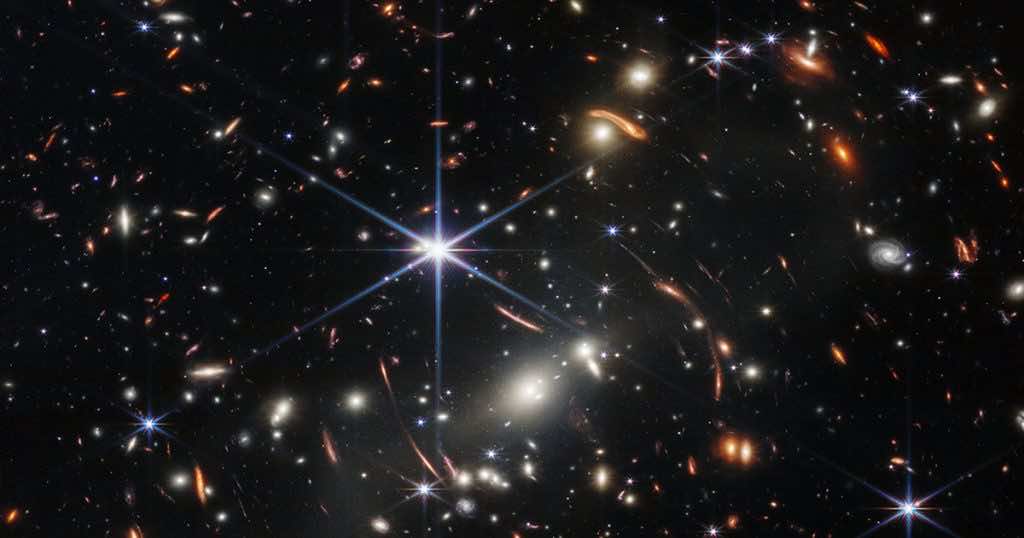On Monday, NASA made history by releasing the first full-color image from its James Webb Space Telescope, dramatically transforming deep-space science.
President Joe Biden, Vice President Kamala Harris, and NASA officials unveiled the new image Monday at the White House. It is the first full-color image from the $10 billion observatory launched into space last year and the highest-resolution infrared depiction of the universe ever obtained.
Since light travels slowly, some of the light in the new image is more than 13 billion years old. That is only about 1 billion years after the Big Bang. Nevertheless, the telescope has successfully viewed the past.
“Today’s a historic day,” said President Biden in a White House briefing on Monday evening.
“These images are going to remind the world that America can do big things and remind the American people, especially our children, that there’s nothing beyond our capacity. We can see possibilities no one has ever seen before. We can go places no one has ever gone before.”
During the briefing, NASA Administrator Bill Nelson told Biden that if you held a grain of sand at arm’s length, it would represent the speck of cosmos seen in this photograph. Nelson said this is only the first image: “We’re going back roughly 13.5 billion years. We’re almost back to the beginning because we know the universe is 13.8 billion years old.”
Webb targeted its powerful infrared camera at SMACS 0723, a huge set of galaxy clusters that act as a magnifying glass for the objects behind them in this deep field. The light streaks are galaxies stretched out by SMACS’s enormous gravitational pull, a phenomenon known as gravitational lensing.
This is simply a sneak peek at a selection of full-color photographs from the telescope’s beginnings. NASA intends to release the remaining images one by one on Tuesday. In addition, images of stellar nurseries known as nebulae will be included, as will the spectra.
With these latest images, NASA is finally reaping the benefits of two decades and $10 billion spent developing the great space observatory.
The new telescope fell into orbit around the sun, 1 million miles from Earth, after launch on Christmas Day and precisely accomplished a meticulous unfolding operation with 344 chances of failure. Yet, despite fears, the almost 7-ton observatory surfaced intact, with all of its scientific instruments operational.
Astronomers hope JWST to complete a gap in our universe’s historical record — the first 400 million years after the Big Bang — and pinpoint faraway worlds that potentially contain alien life in the years ahead.
Engineers constructed JWST to be six times larger and 100 times more powerful than the Hubble Space Telescope, which has been NASA’s primary orbiting observatory since its launch in 1990.
The most recent JWST image showcases three decades of scientific advancement, with hopes of peering considerably deeper and more precisely into the cosmos than Hubble ever could.
“This telescope is one of humanity’s great engineering achievements,” Vice President Kamala Harris said on Monday.
“From the beginning of history, humans have looked up to the night sky with wonder, and thanks to dedicated people who have been working for decades in engineering and on scientific marvels, we can look to the sky with new understanding.”

